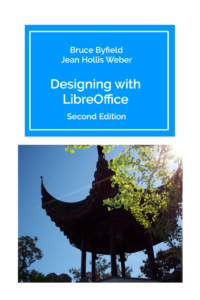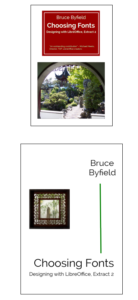 Bruce Byfield and Jean Hollis Weber announce the second edition of Designing with LibreOffice. The book is available as an .ODT or .PDF file under the Creative Commons Attribution/Sharealike License version 4.0 or later from https://designingwithlibreoffice.com/
Bruce Byfield and Jean Hollis Weber announce the second edition of Designing with LibreOffice. The book is available as an .ODT or .PDF file under the Creative Commons Attribution/Sharealike License version 4.0 or later from https://designingwithlibreoffice.com/
The first edition was published in 2016, and was downloaded over thirty-five thousand times. Michael Meeks, one of the co-founders of LibreOffice, described the first edition as “an outstanding contribution to help people bring the full power of LibreOffice into their document.” Similarly, free software author and journalist Carla Schroder wrote, “Designing With LibreOffice teaches everything you need to know about document production…. suitable for beginners to wizened old pros, who will probably discover things about LibreOffice that they didn’t know.”
The second edition updates the original, removing outdated information and adding updated screenshots and new information about topics such as Harfbuzz font shaping codes, export to EPUB formats for ereaders, the Zotero extension for bibliographies, and Angry Reviewer, a Grammarly-like extension for editing diction. In the future, the writers plan to release other editions as necessary to keep Designing with LibreOffice current.
For more information or interviews, contact Bruce Byfield at bbyfield@axion.net.



